Click above for high-res gallery of the 2010 Ford Mustang
When the 2005 Ford Mustang debuted, it thoroughly reinvigorated the pony car segment that it created four decades earlier. After 25 years of being assembled on the archaic rear-wheel-drive Fox platform, the Mustang finally had an all-new platform and styling that hearkened back to the late 1960s. Known as the S197, this Mustang appeared at a time when it was in fact the only surviving member of the muscle car class. The Camaro and Firebird had been cancelled two years earlier and Chrysler had been out of the rear-wheel-drive sport coupe market since the 1970s. The Mustang's enormous success inspired Chevrolet and Dodge to create their own retro-styled muscle cars in the form of the new Camaro and Challenger. Fortunately for Mustang fans, Ford has not been sitting idle, and even while it was creating all those special edition Mustangs over the past few years, it was also working on thoroughly revamping its core pony. For the 2010 Mustang, Ford has taken the best parts of the S197 and fixed most of what was broken. Read on to learn what's new.
The 2010 'Stang is at once the same and different. Like the 2005-09 model, it's immediately recognizable as Ford famous pony car. If anything, it looks even more like a late '60s Mustang thanks to some additional curvature in its lines, especially along the belt-line. At the same time, it also looks more contemporary. The designers have improved the aerodynamics and reworked many of the design details. What may be even more important for drivers of the Mustang is an all-new interior that finally dispenses with cheap, hard plastics and looks like it was designed in this century, but more on that in a bit.
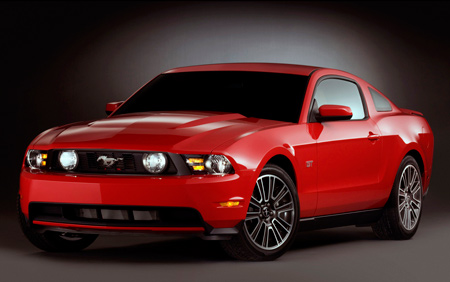
Starting at the front, the basic theme of the current 'Stang is retained with the forward-canted grille and inset headlamps. The turn signals have been moved into the pocket with the headlamps, which themselves appear smaller than before. The whole hood has been re-contoured with a "power-dome" in the center, which should provide plenty of clearance for performance hardware when tuners and owners begin modding their cars. Out toward the edges, the fender and hood are slightly concave leaving a ridge that runs back to the A-pillar. The whole leading edge of the hood now curves down smoothly to ease the airflow around the nose and over the top of the car. The old school antenna mast has finally been banished from the front fender and the windshield washer nozzles now sit under the trailing edge of the hood instead of on top.
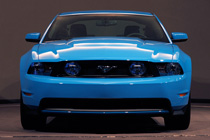
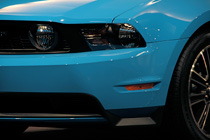
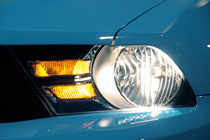
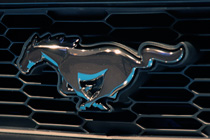
At the outer ends of the lower front fascia are black plastic air deflectors to further enhance the airflow, directing it around the sides instead of underneath the car. All of this contributes to drag reductions of seven percent on the V8-powered GT model and four percent on the base V6. Better management of the air-flow around the front of the car also reduces lift by 23 percent.
Around the sides, the transition from the fenders to the wheel arches has been smoothed out, which eliminates the crease on the current cars. The longitudinal crease that starts at the trailing edge of the front wheels has been sharpened and now has a slight under-cut that makes it more prominent, while the "hockey stick" side scoop contour has been subtly re-shaped. The lower edge of each side window has been moved down and now intersects with the newly curved contour of the rear fender at the trailing edge of the door.
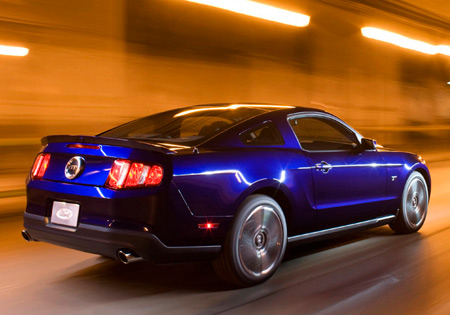
Exterior designer George Saridakis describes the rear haunches and other changes as giving the Mustang a more voluptuous look. At the very back, the outer ends of the rear fascia are now angled forward, which helps to reduce the visual impression of the rear overhang. Also contributing to that revised impression is a rear bumper with a reduced offset.
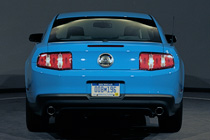
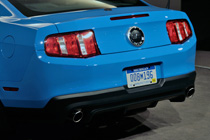
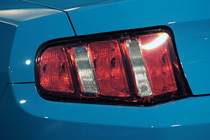
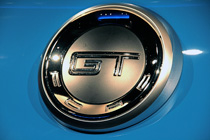
Around the back of the car, Ford designers have taken advantage of the illusion that results from using contrasting colors. The lower part of the rear fascia is now a contrasting black with a molded-in diffuser. The darker color reduces the visual height of the rear deck. The tail-lamps, which still feature the traditional three bar look, have been re-shaped and now feature sequential turn signals. When the turn signals are on, the three lamps light in sequence from the innermost to the outer. The rear badge has also been reshaped and the keyhole has been removed as the Mustang finally gets an interior trunk release.
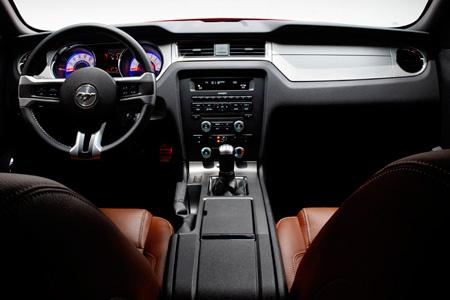
When the 2005 Mustang debuted, one of the biggest and most justified criticisms was its interior, specifically the cheap materials and hard plastics. Those criticisms are completely banished in the 2010 Mustang. All the plastic surfaces on the dash are now soft to the touch and pleasant to look at. Even the trim across the dashboard is aluminum rather than metallic-finished plastic. The same goes for the spokes on the steering wheel. The dual-brow look across the top of the dashboard that dates back to the early Mustangs is now also reflected across the lower edge.
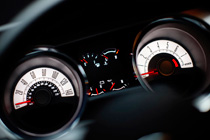
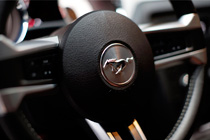
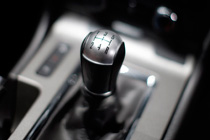
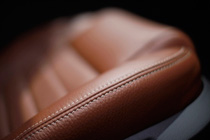
The center console of the current model has elements at a variety of heights and many drivers complain about hitting their knees on the parking brake lever when bracing themselves during cornering. The brake lever on the '10 Mustang has been shortened and moved back, well clear of driver's right knees. The arm rest is now flush mounted and there is a retractable cover over the cup holders. The entire surface of the center stack and console now mirrors the arm-rests on the door panels with everything at the same height and matching contours.
The designers have also taken elements that previously stuck up above the dash surface like the A/C registers and gauges and made them flush or even set them below the surface. The sub-flush gauge mounting reduces the impression of looking down a tunnel at the instruments. The back-lit gauges also now have a translucent arc where the numbers are. The numbers normally appear in black against a white background unless you go for the MyColor option. In that case, the background will appear in whatever color the driver chooses. MyColor also brings a back-lit "Mustang" kick plate that is kind of gimmicky but looks cool when you open the door.
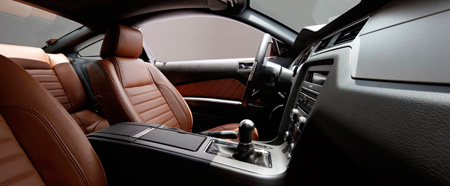
The designers have also added a couple of nice detail touches. The standard icon that normally appears on traction control disable switches has been reworked to look like a Mustang including the tri-bar taillights. The basic shape of the steering wheel is carried over but the spokes have been chamfered allowing for a more comfortable grip. The overall impression of the Mustang's new interior is that Ford has improved its execution in making the cockpit both look more appealing and feel better to the touch.
When Ford redesigned the Escape CUV for 2008, the body and interior were also completely redone but the mechanical components were largely carried over. Similarly, the drivetrains and suspension components of the 2010 Mustang are mostly carried over, although some improvements have been made on the V8 GT model. According to chief engineer Paul Randle, the current Bullitt has been considered the best Mustang ever in many respects thanks to its wonderful balance of handling and power, so it was chosen as the baseline for the new GT.
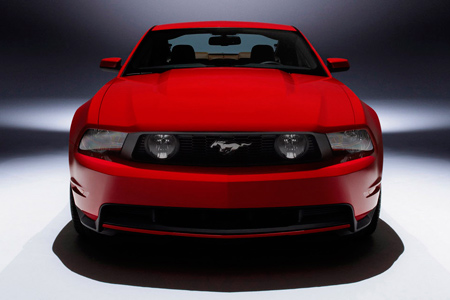
The 2010 GT retains its 4.6L three-valve V8, which has now been bumped up to 315 hp and 325 lb-ft of torque. The air intake has been reworked so that fresh air is drawn from behind the grille rather than from the wheel well. The duct from the air filter box to the throttle body has been straightened and smoothed out to reduce flow restriction. The whole car has also been stiffened and new sound insulation has been added for a quieter driving experience.
Since Mustang drivers still like to hear the roar of a big V8, the engineers have compensated. A small tube coming off the side of the duct runs to the passenger compartment giving occupants some of that V8 induction sound directly. GT models with the new 19-inch wheel-and-tire package also get an aluminum strut tower brace to stiffen the car's structure further. The base 4.0L V6 remains unchanged for 2010, although 2011 or soon after will probably see the Mustang follow the Escape's path with more significant powertrain upgrades. That's when we're likely to see Ford's smaller displacement, turbocharged, direct-inject EcoBoost engines added to the pony.
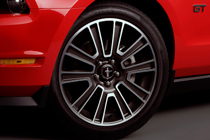
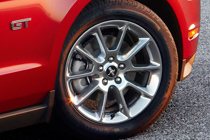
The Mustang's suspension architecture has also been carried over from the S197, meaning struts with lower control arms up front and a live axle trailing links and a panhard rod out back. The engineers have re-tuned the springs and added new dampers that should improve wheel control and ride. New wheel-and-tire packages are now available across the board with a one-inch increase in diameter. The V6 Mustangs now have 17-inch wheels standard with optional 18-inchers, while the GT has 18-inch or 19-inch packages.
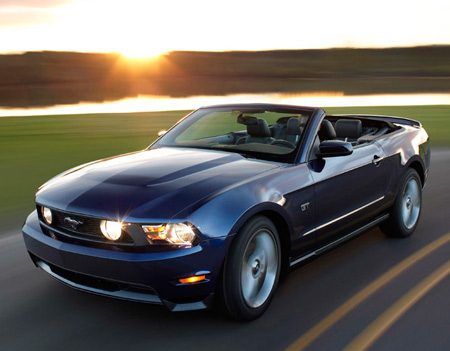
One feature that is new to the 2010 Mustangs is electronic stability control which will be standard on all models. The ESC always defaults to on when you start the car. On the V6 Mustangs the driver will have the option to turn the system off. On the GT, the system can be turned off, or switched to a performance mode that allows more slip before intervening to limit the fun.
One important thing that hasn't changed much is weight. The 2010 V6 Mustang only picks up 15 lbs compared to the 2009 model, while the GT climbs just 35 lbs. That means Mustangs still have an advantage of about 400-500 lbs over the new Camaro and even more compared to the larger Challenger.
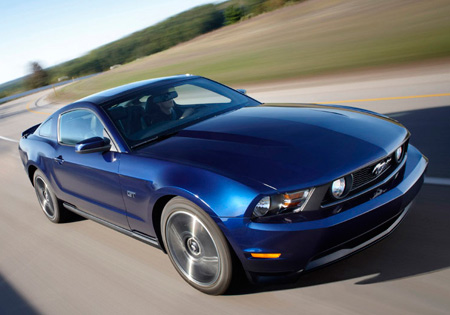
We'll be allowed behind the wheel of the new 2010 Ford Mustang in mid-December, at which time we'll let you know how it behaves compared to its predecessor. From what we've seen already, the new interior is far beyond both its new competitors and its predecessor in the areas of design, ergonomics and materials. Assuming Ford doesn't significantly increase the price, the Mustang should continue to offer the affordable performance it always has with a new measure of refinement.
PRESS RELEASE
LEANER, MEANER 2010 FORD MUSTANG MODERNIZED,
WITH MORE REFINEMENT, NEW LOOK INSIDE, OUT
- New muscular, sculptured exterior design is a modern evolution of Mustang heritage
- Powerful new interior design features world-class craftsmanship, upgraded materials and new technology
- Performance improvements – larger wheels, retuned suspension and increased horsepower – developed from engineering experience on the race track and from special editions including the Mustang Bullitt
Combine those elements with the new Mustang's improved handling characteristics, more standard safety and technology features and its already-strong safety and quality performance and reputation, and it's easy to see how the muscle car known around the world delivers on the promise of fast, fun and affordable performance for a whole new era.
"More than 9 million customers have made Mustang one of the world's most beloved automotive and cultural icons," said Mark Fields, Ford's president of The Americas. "Making sure this modern legend lives up to their expectations has been a driving force for the team, which went to great lengths – gathering customer input everywhere from race tracks to Main Streets in cities throughout the U.S. – working to create the best Mustang ever."
For 2010, the team delivered. "The new Mustang marks new levels of both power and refinement," said Paul Randle, Mustang chief engineer. "We've designed and engineered this to be the next classic Mustang that everyone talks about for years and years."
In true Mustang tradition, there is a "steed for every need." At launch, customers can choose from a V-6 or V-8 with their choice of coupe, convertible or innovative glass roof, plus several new options and features delivering the opportunity for customers to personalize their cleaner, meaner-looking Mustangs.
"The best Mustangs have always been the ones that connect young America with the spirit of the times – and the 2010 does exactly that," said J Mays, Ford's group vice president of Design. "The new Mustang is close to the magnetic center of the original, fully loaded with the swagger you'd expect, but with modern refinement and attention to detail like you've never seen in a muscle car."
It starts with the more aggressive grille, punctuated with the first new Mustang emblem since the car's introduction in 1964. Both the V-6 and GT have brand-new sculptured front-end designs unique to each model. The headlamps and turn indicators, now integrated into one unit, are modern interpretations inspired by the 1970 Mustang. On the V-6, the fog lamps are located on the lower fascia, while on the GT, the fog lamps are again located in the upper grille – but are smaller than the outgoing model, similar to the original lamps of the 1967-68 models that inspired them.
"We understand Mustang's heritage and iconic status it has in the world and as a symbol of Americana," said Peter Horbury, executive director of Design, The Americas. "We wanted to create a face that is more muscular but unquestionably, unequivocally Mustang and carry that spirit through to the entire car."
The exterior sheet metal, except for the fast-back roofline, is all new for 2010. At the front, the new headlamps, lower fascias, fenders and grille are capped by a powerdome hood that adds to the muscular appearance while functionally allowing for enhanced air cooling of the engine.
Mustang's washer-fluid nozzles are tucked into the cowl, while the antenna has been moved to the rear, both of which create a cleaner appearance while also reducing wind noise.
Front rear fenders feature taut, sculptured wheel flares, like a tight skin stretched over the wheels. A classic spear character line on the doors leads to a modern indication of "hip" rear fenders. "It helps give the car aggressive, forward direction, like it's ready to jump," said Doug Gaffka, Mustang chief designer.
The rear end design features aggressively angled rear corners, a sculptured decklid and prominent rear badge. A rear-view camera incorporated into the spoiler is available on some models.
A notable new tail lamp design features three LED bulbs firing sequentially from the inside for turn indication. The sequential bulbs were a distinct Mustang feature in the '60s and comeback to the 2010 for the first time since then. Locating the reverse lamps vertically creates a modern version of the Ford classic three-lens taillamp.
The best of new, heritage
Cleverly combining modern technology with Mustang heritage is a signature of the 2010 model, in terms of both design and engineering.
"All of the Bullitt elements are the base foundation of the GT," said Randle, noting engine and chassis improvements. "We also applied some improvements gained from Mustang racing. We're learning constantly and always giving that to the customer on the base car."
The wheel-and-tire combinations are 1 inch bigger across the board, ranging from 17 to 19 inches, which helps improve handling and braking. The shocks have been retuned on all models as well.
"We adjusted the springs, stabilizer bars and shocks to better balance the ride, steering and handling for all models, which results in a more engaging driving experience," adds Mustang Vehicle Engineering manager Tom Barnes. "The 2010 Mustangs feel more controlled for steering and handling, yet retain a good ride balance."
The 2010 Mustang 4.6-liter V-8 benefits from innovations from the popular Bullitt model. Power has increased to 315 horsepower.
"It runs on regular gasoline, but if you put in premium it has adaptive calibration that will give you even better mid-range torque," Barnes said, adding that Easy Fuel™, Ford's innovative capless fuel system, is standard on all models.
"It's an upgrade to the most-robust, most-accessorized engine in the marketplace today," Randle added. "No one has the reliability, no one has the upgraded options. This is a fantastic engine, proven on the race track, the drag strip and on the highway."
AdvanceTrac™ Electronic Stability Control (ESC) is now standard and complements Mustang's all-speed traction control and anti-lock braking system (ABS).
"It gives a driver a little more confidence that in any type of condition the car will maintain what they want it to do," Barnes said. "The 2010 Mustang improves ride quality and maintains world-class steering and handling."
In addition to all of the design and driving dynamics improvements, the 2010 Ford Mustang is engineered to maintain its top government safety ratings. Standard safety equipment includes: dual stage front driver and passenger air bags; front seat-mounted side air bags; and, Ford's Personal Safety System.
Interior leads in design, materials, content and comfort
Like the exterior, the interior design is all new with world-class materials and execution.
The powerful new one-piece instrument panel design is crafted in seamless soft-touch TPO (Thermoplastic Olefin) skin fully encompassing available genuine aluminum-finish panels. Mustang's chromed-ringed gauges and dual-vane air register vents are precisely crafted and positioned.
"That's the difference between good enough and exceptional," said Gary Morales, Interior Design manager. "We wouldn't accept anything less than leadership design and world-class craftsmanship."
The instrument panel and console flow as one shape, another strong connection to Mustang heritage. The seats and arm rests have softer materials with high-quality stitching.
The new center stack design adds the latest version of Ford SYNC™, with new features 911 Assist and Vehicle Health Report. Drivers also can customize their ambient and instrument lighting through the My Color™ system, which features 125 color options.
"The centerstack is quite progressive. The electronic finish panel containing the audio and climate control buttons and knobs are integrated into the finish panel," said Kim Zielinski, Mustang Instrument Panel engineer, 2010 Mustang. "I believe the customers will really like the new look."
In addition to the improvements in technology and comfort, drivers will notice a quieter ride. "It's much more vault-like," Barnes said. "But we maintained the signature Mustang sound."
The upgraded instrument panel along with new sound deadeners added to select areas helped improve interior quietness, especially at high speeds or on rough roads. All the better to hear that famous Mustang roar.
With a completely redone exterior that echoes the classic Mustang designs of the past, an interior featuring world-class materials, numerous technology upgrades and an improved driving experience, the 2010 Mustang is poised to become the latest classic in the proud line of Ford's iconic American muscle car.
"The 2010 Mustang is drop-dead gorgeous," Randle said. "This car marks the best efforts of 45 years of passion and enthusiasm among the best designers, engineers and manufacturing experts in the business, and we can't wait for everyone to see it and start driving it."
The 2010 Mustang will be built at the Auto Alliance International Plant in Flat Rock, Mich.
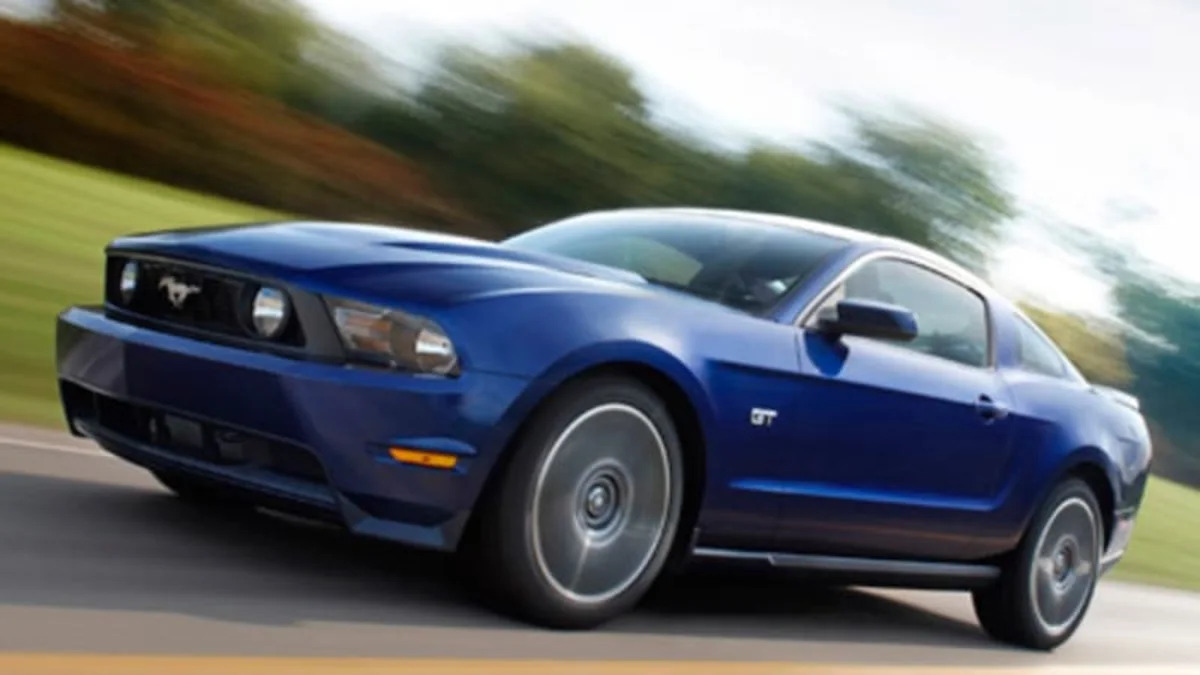
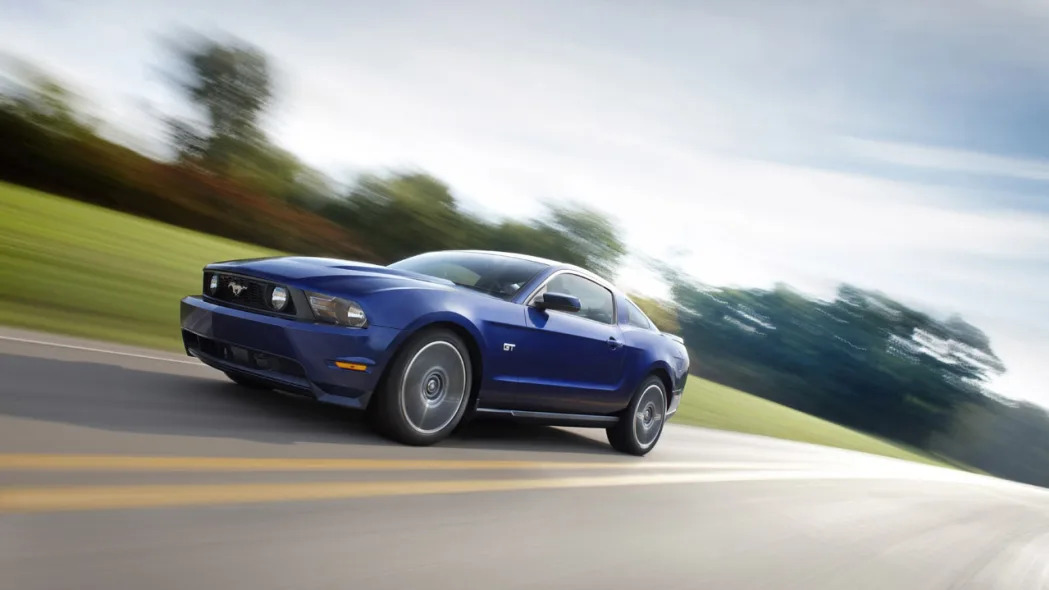


Sign in to post
Please sign in to leave a comment.
Continue